1/48 RAF Mustang ponies
Everyone "knows" that the Mustang was the airplane designed and built in 120 days for the British because North American's Dutch Kindelberger didn't want to build Curtiss P-40s under license, and that the first Mustangs were a disappointment because they were hobbled by the godawful Allison engine, and that the airplane only became "good" when it was powered by the mighty Merlin. Right? That's the stuff in all the Mustang books, isn't it?
Well, yes, all that is in the "history books," many of which are written by people who prove the old saw that if you copy from one it's plagiarism, while if you copy from many it's research; and if the many have copied from each other, then one arrives at the old Stalinist saying, “A lie told often enough becomes the truth.” We are only now, seven decades after the events, starting to discover that a lot of what was written as history at the outset was "uninformed" to be generous, and then was copied by those who followed, to the point that it became "the truth" because it had been repeated so many times.
Here's the actual truth about Edgar Schmued and the Mustang:
Edgar Schmued fell in love with aviation when he saw an airplane fly in his native Germany when he was eight years old. From then on, he was dedicated to the idea of becoming an aviation engineer. Self-taught, he went to work as an apprentice in a small aircraft engine manufacturing company in the last year of World War I. With aviation development crippled in postwar Germany by the terms of the Versailles Treaty, Schmued left for Brazil in 1925, where he found employment in the General Aviation Company, the aviation branch of the General Motors Corporation's Brazilian operation.
Schmued quickly built a reputation for solid work at General Aviation, and in 1931 GM sponsored him to emigrate to the United States where he went to work for the Fokker Aircraft Corporation of America, owned by General Motors and finally achieved his dream of becoming an aircraft designer. Three years later, GM sold Fokker to the North American Aviation holding company. North American had been founded in 1928 as a company that bought and sold interests in airlines and other aviation-related companies. The Air Mail Act of 1934 ended such holding companies, and with the acquisition of Fokker, North American became an aircraft manufacturing company. James H. “Dutch” Kindelberger was recruited from Douglas Aircraft to run the new company.
Kindelberger moved the company headquarters from Maryland to Los Angeles, California, and closed the Fokker plant in New Jersey where Schmued worked. Schmued's wife was reluctant to move across the continent, and he took a position with Bellanca Aircraft in New York. This didn't work out and after a few months, he was able to rejoin North American, since Kindelberger was looking for young designers.
Once in Los Angeles, Schmued joined the design team Kindelberger had assembled to commence work on a series of trainers for the military, as a preliminary design engineer. Over the next several years, Schmued was involved in the design of the GA-16 trainer that became the BC-1 and led to the famous T-6 Texan trainer series, and also worked on the O-47 observation plane. His first foray into fighter design was the NA-50, a sngle-seater based on the T-6 trainer, 50 of which North American sold to the Peruvian Air Force.
Kindelberger was always on the outlook for opportunity, and managed to convince the Army Air Corps to let his design team inspect and disassemble the first Bf-109 to arrive in the United States following its crash and capture in the Spanish Civil War. This connection to the Bf-109, and the later similarity of the early P-51 to the German fighter led to an “uban myth” over the years that Schmued had actually worked for Messerschmitt and brought knowledge of the 109 with him when he emigrated to America.
In 1940, the British Purchasing Commission was looking for a company to build additional Curtiss P-40s under license for use by the RAF, following the fall of France. When North American was contacted, Kindelberger's response was that the company was not interested in building a semi-obsolescent design, but could produce a state-of-the-art fighter for the RAF in 120 days. In 1981, speaking at a forum held at the Planes of Fame Air Museum in California about the development history of the P-51, Schmued explained that while the prototype of what would come to be known as the P-51 Mustang was indeed built in 120 days, “I had been playing with such a design for five years.” When Kindelberger made his offer to the British, he knew all about Schmued's “hobby.” The result was the North American NA-73, which the RAF christened “Mustang” when the first ones arrived in England in 1941. Due to its lack of high altitude performance, it was adopted into the low-level tactical photo reconnaissance role.
So far as the Allison-powered Mustang being a "disappointment" is concerned, Southern California aviation legend the Rev. B.C. Reid, who flew every kind of Mustang there was with the 107th Tac Recon Squadron of the 67th Tac Recon Group during 1943-45, once told me that the P-51A Mustang was to the Mustang series what the Bf-109F was to Messerschmitt's fighter: the best combination of engine and airframe for flight harmony. "After the A-model, they kept adding weight more than they added power, and the D-model was an underpowered truck in comparison with the A-model. Its only grace was it could fly high." Steve Hinton, who has also flown every version of the Mustang, confirms that the lightweight Allison-powered sub-type has the nicest handling of any in the series. In terms of performance, when an RAF Mustang I was test-flown against a captured Fw-190A, there was little to choose between the two up to 23,000 ft. and the Mustang could outrun the Focke-Wulf below 15,000 ft.
26 Squadron was the first to operate the Allison Mustang, when it first augmented and then replaced its Tomahawks with Mustangs in February 1942, though it did not become operational on the North American fighter until that July. In April 1942, Mustangs replaced Lysanders in 16 Squadron and Tomawhawks in 613 Squadron. By the time of the Dieppe Raid in August 1942, 12 squadrons were flying the Mustang I, and American Hollis Hills, a pilot in 414 Squadron RCAF, became the first Mustang pilot to shoot down a German airplane when he downed a Fw-190A during the operation. In October 1942, a recon mission to the Dortmund-Ems Canal became the first time an Allied single-engine fighter had flown from England over Germany. By February 1943, 16 squadrons were equipped with the Mustang, the high point of Mustang service in the RAF during the war.
By mid-1943, the Mustang I equipped squadrons were being reequipped with Spitfires and other types as the perceived need for tactical reconnaissance squadrons declined. By the time of the Normandy invasion, 2nd Tactical Air Force had five Mustang units: 2 and 268 Squadrons in 35 Wing flying Mustang IAs, and three in 39 Wing - 168, 414 and 430 Squadrons on Mustang Is. Following the invasion, 2 Squadron re-equipped with Mustang IIs. By November 1944, the four Mustang squadrons still operating took on "Arty " - spotting for Army artillery - in Holland as the front stabilized. In January 1945, 2 Squadron re-equipped with the Spitfire FR XIVE, and passed their Mustang IIs along to 268 Squadron, the final user of Allison Mustangs in the RAF, with one flight of Mustang IAs and one of Mustang IIs. During Operation Bodenplatte, Flt. Lts. Mercer and Lyle scored the last aerial victory by Allison Mustangs when they shot down a Ju-188. 268 Squadron soldiered on, moving close to the front in March 1945 for he Rhine crossings, and continuing Tac-R and artillery spotting missions until the end of the war. In April 1945, the original Mustang squadron, 26, re-converted to Mustang Is to fly artillery spotting missions for ships firing on the German positions in Bordeaux. Following V-E Day, the Allison Mustang rapidly disappeared from RAF service.
Until 1994, the Allison Mustang was ill-served by the kit makers. In 1/72, Frog made an indifferent kit with a wing more appropriate for a P-51D. To date, modelers in 1/72 are still ill-served by the Allison Mustang offerings, which seem unable to determine such basic items as airframe shape, what wing to use, landing gear, etc. Without major scratchbuilding, the 1/72 modeler is out of luck.
No such problem exists in 1/48, where Accurate Minatures released the P-51, A-36A and P-51A as the first products of this company. The only complaints one can have with these kits is that the propeller is incorrect for any version other than the P-51A, and is too thick as it appears on the parts tree. The kit comes with differently-molded engine cowlings to cater to the different- shaped carburetor intakes and the weapons carried (or not) in the nose. The wings are different for each, with the P-51 equipped with 4 20mm cannon that extend in front of the wing, the A-36 having four machine guns and dive brakes, and the P-51A having a wing similar to the A-36 minus the dive brakes; there are also different looks in the shape of the radiator scoops between versions. All of these differences are well-met by these kits.
Sadly, Accurate Miniatures went out of business (several times. Ed). The kits can still be found at dealer's tables and The Bay. A few years back, ICM did a ripoff release of the Mustang II kit (similarly to what they did with the Tamiya P-51B and P-51D). Unfortunately, whoever created this kit knew little about the early Mustang, because when they combined noses and fuselages, they used the nose of the P-51/Mustang IA, which has the narrow carburettor intake, rather than the wider one of the P-51A/Mustang II. They also left off the inner gear doors.
However, all is not lost. The kit is actually closer to the Mustang I than any other. A modeler need only fill in the gun positions in the leading edge of the wing and do some surgery to widen the spacing between the .50-caliber weapons and drill out an opening for the .30 caliber weapon, and then drill out the gun ports in the lower nose for the .50-caliber guns fitted there, and one has a Mustang I. When I found one of these kits on the “deals shelf” at my LHS for the grand price of $9.00, it was a project that was meant to be.
The big effort in this project was modifying the wing to Mustang I configuration. I glued Evergreen plastic dowel in the gun ports, then sanded the leading edge smooth. I then drilled out the gun ports for the .50 caliber weapons, which are more widely spaced, and the port between them for the .30 caliber weapon. I also drilled out the gun ports in the lower engine cowling. Other than that, the kit was assembled like an A-M kit. I did make a “spade grip” control stick, since the Mustang I used the British-style item. I also used extra propeller blades from the spares box that had come with an Eduard P-39 to create the narrow-chord prop of the Mustang I. The missing gear doors were replaced by some A-M gear doors from the spares box. I also drilled out the left rear window for the camera port and mounted a scratchbuilt F-24 camera behind the pilot's seat.
According to the still-excellent Profile Publicans "Camouflage and Markings: North American Mustang, Northern Europe," the Mustang I arrived from the factory in "US Equivalent" colors of Dark Green and Dark Earth, with ANA602 "Light Grey" substituted for RAF "Sky." The airplanes arrived in England after the RAF had changed the camouflage to Ocean Grey, Dark Green and Sea Grey Medium, and the Mustangs had the Dark Earth repainted. Some were repainted with actual Ocean Grey, while many were painted with “Mixed Grey” - simply a mix of black and white that resulted in many different shades of grey, which was done in 1941 due to the short supply of Ocean Grey at the time.
I decided to paint this with “Mixed Grey,” Dark Green and “sky Grey”, using an actual black/white mix for the upper Grey, Tamiya RAF Dark Green and Tamiya “Sky Grey” for the lower color. This was applied freehand after pre-shading the model. I applied the full-span yellow leading edge and the 12-inch spanwise yellow stripe that was the first “ID marking” to distinguish the Mustang I from the Bf-109.
I used the kit decals for the Polish national insignia, the IS letter and the serial numbers, to create a Mustang I flown by 306 “Torun” Squadron at Dieppe in 1942. The national insignia came from an Xtradecals sheet of RAF Mustangs.
I attached the wheels and unmasked the canopy I really like the RAF "Allison Ponies" and now I finally have the Mustang I. It would be nice if some manufacturer would do this early Mustang, but everyone “knows” they were “disappointments,” and who wants a “disappointment” in their collection?
I've added photos here of the Mustang IA and Mustang II done from the Accurate Miniatures kits.

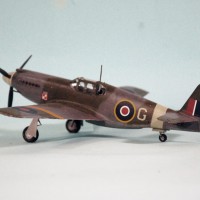
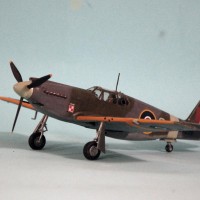
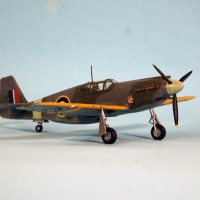
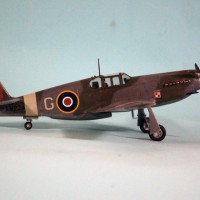
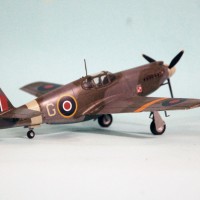
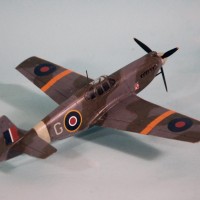
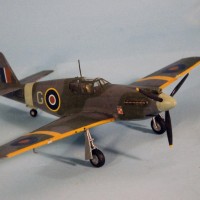
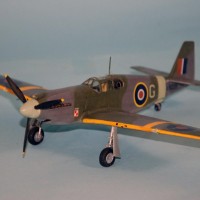
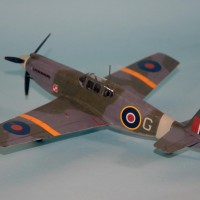
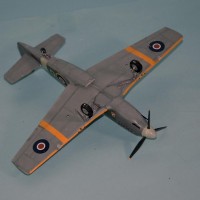
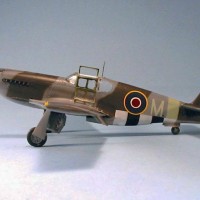


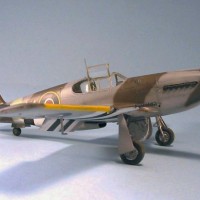
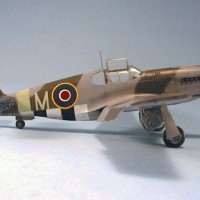
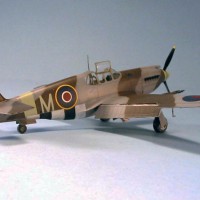
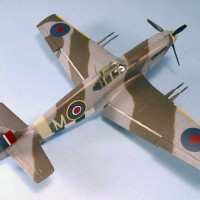

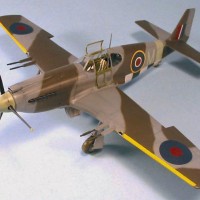
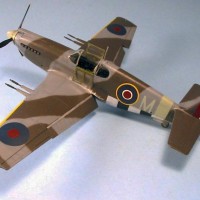
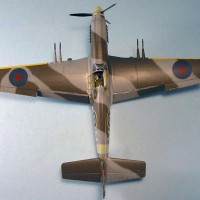
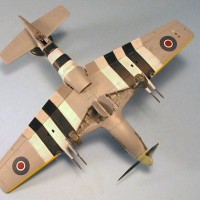
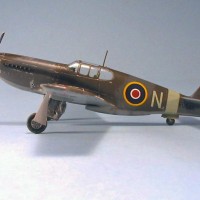
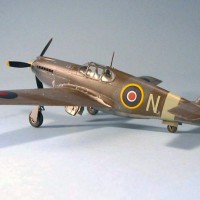
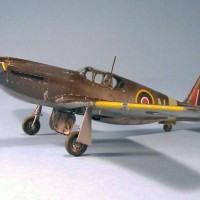
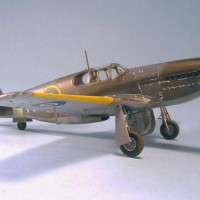
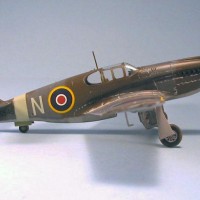
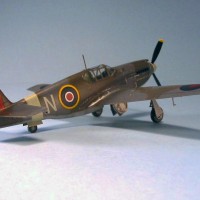
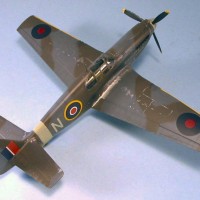
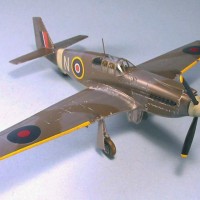

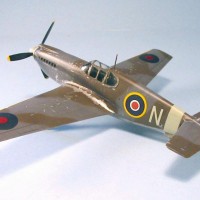

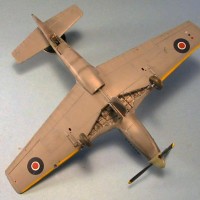
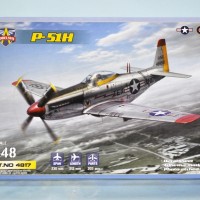
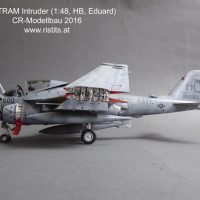


Great information, Tom ... and your 2 P-51s are excellent ... as always!
Thanks for sharing!
Thre's actually three 🙂
Thanks for sharing these, Tom. I really like the Allison Mustang.
A great post Tom.
The Allison engined Mustang is always overshadowed by its Merlin engined sister.
They were always a great aircraft in their own right - the fact that they remained in front line service with the RAF in the TAC recce role into 1945 - years after production ceased speaks volumes about the quality of the original design and the strengths of the Allison engine at low level.
Some pics of the latest Brengun offering in 1/72.
[pic 1]
1 additional image. Click to enlarge.
Nicely done Tom Nice article as well. I’ve really enjoyed building those AM stangs especially the Allison versions
1 attached image. Click to enlarge.
fine looking brit "stangs"...the jews who hitler let go always amazes me...einstein ...fermi...men who could have won the war for him...when Edgar Schmued was let into the U.S. from south america he was 1 of only 100 candidates let in that year...Schmued also worked on the b-25, f-86, f-100 and the f-5...i think
Some beautiful RAF Ponies, and a great piece of history - thanks for that! And @davem David - thanks for the tip! I'm after one of those now...!
As always, a great story and build